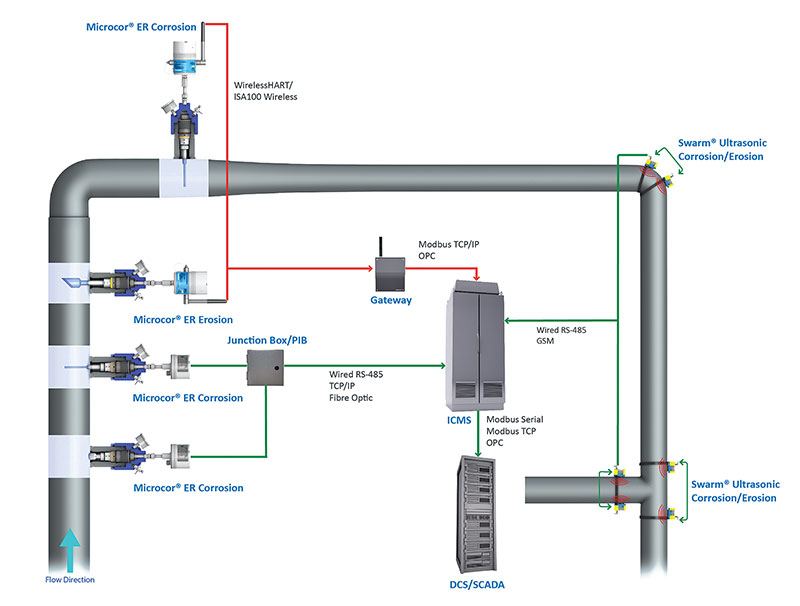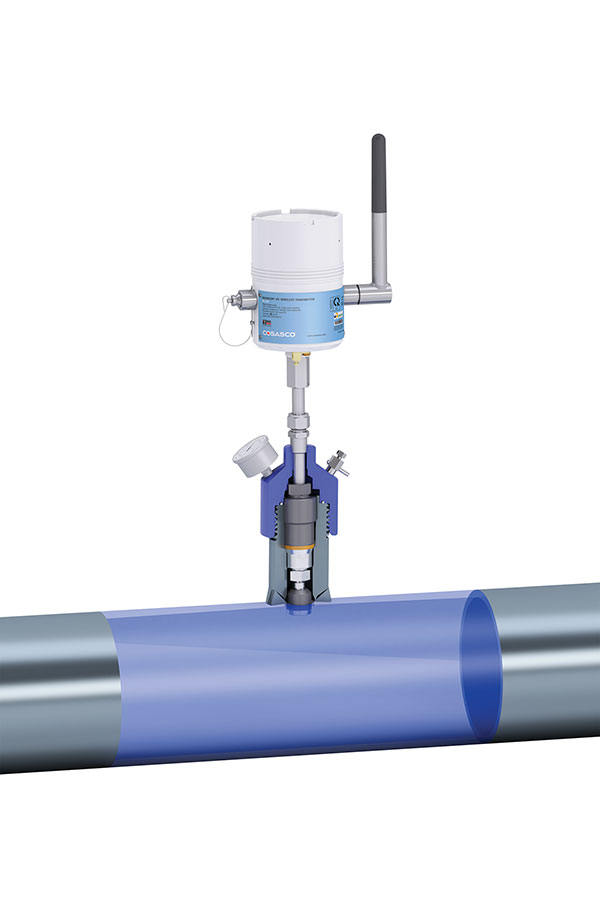October 2018, Vol. 245, No. 10
Corrosion Control
Controlling Corrosion: Don’t Conflate Cause and Effect
By Roland Anderson, Executive Vice President, Cosasco
As long as there has been an oil industry, there have been corrosion and erosion. Upstream, midstream and downstream operators have constantly sought better ways to protect their assets and safeguard both health and safety and the bottom line.
Once upon a time, there were coupons to act as a proxy for metal loss. Then there were in-line sensors capable of monitoring corrosivity. Now there are non-intrusive, ultrasonic sensors capable of directly monitoring pipe wall thickness. The trend is for more sensors, more data and more monitoring at the expense of inspection.
It’s progress, but it would be a mistake to read this as a story of each technology simply superseding the last. In fact, the most effective approach is to combine intrusive probes and non-intrusive sensors under new procurement arrangements, to give an integrated perspective that is greater than the sum of its parts. To understand how, we need to disentangle cause and effect.
Non-Intrusive Sensors
Whether the problem is corrosion or erosion, ultimately the end-goal is to minimize metal loss. Gradual loss of pipe thickness can become a major hazard, threatening loss of containment, significant downtime and – in worst case scenarios – injury or loss of life.
It stands to reason then, that operators want to monitor and measure that metal loss. By keeping track, they can be proactive with repairs and minimize risks. In the old days however, this simply wasn’t possible. Coupons, inserted into the flow, could provide a proxy reading for metal loss but there are simply too many variables for this to ever be completely accurate.
The recent advances in ultrasonic sensors have been something of a revelation for the industry. These can be affixed to the outside of the pipe wall, with no need to penetrate it (and consequently no downtime). They use soundwaves to directly measure pipe wall thickness at a given location – no proxy readings, no estimates – concrete data.
This gives operators something they never had before. What’s more, the fact that they are non-intrusive is seen as a major plus. They can be installed easily in high risk, harsh environments and feed back data wirelessly to corrosion engineers. Directly measuring metal loss is unquestionably the best option for erosion monitoring too.
In-Line Probes
This ability to directly monitor the effects of corrosion and erosion has rightly caused a lot of excitement in the industry. However, in some quarters, eagerness has seen some overstate the case for non-intrusive sensors, seeing them as a replacement rather than a complement for existing intrusive technology.
That would be to monitor the effect without monitoring the cause. Both are vital.
In the case of corrosion, operators often inject corrosion inhibitor chemicals into the flow to reduce corrosion rates and protect pipe wall thickness.
If an operators were only measuring pipe wall thickness, then they are left to make inferences about the corrosivity. This is possible in theory but it’s like getting rocks when you need fine-sand level granularity. Having spotted a worrying level of metal loss, the operator might adjust inhibitor levels, but it might then be a week or a month before the effect of the change becomes apparent on the pipe wall. In the meantime, more damage is done.
Instead, it’s worth measuring the cause itself. In-line, intrusive probes can directly monitor the corrosivity of the liquid flowing through the pipe, feeding back data to the corrosion engineer in real-time.
This allows the engineer to instantly tweak and fine-tune the level of inhibitor chemical used, without having to wait each time to see the eventual effect. Not only does this save on inhibitor chemical, it lessens risk and improves visibility and control.
Integrated System
It should be clear then, that the two technologies are better understood as complementary, not mutually exclusive, options. Each offers strength the other can’t and makes up for the weaknesses of its counterpart.
However, by integrating both types of sensor into a single system, the advantages are greater than the sum of those listed above. Why? It’s all in the data.
By having both sets of data feed wirelessly into a smart system that analyses both streams, you can cross-reference the data and use each to validate the other. For example, if the non-intrusive sensors detected a particularly severe reduction in pipe wall thickness in a certain location, this could be cross-referenced with the intrusive monitor data. If the level of corrosivity was also high, then the data is corroborated, and the issue can be rectified.
If, however, an engineer was relying on one system or the other, validation would require manual inspection. This costs time and money and, in a hazardous environment, introduces an unnecessary degree of risk to the inspection team.
In fact, having live corrosivity and pipe wall thickness data streams can drastically reduce the need for an inspection regime at all. Defect monitoring becomes an automatic issue, and inspection teams would become the exception rather than the rule, reducing risk and cost.
A truly smart system could then deploy machine learning and big data analysis to detect patterns in the two sets of data, finding hidden patterns and correlations that could further reduce risk and improve control.
New Procurement Models
With new technology and approaches also come the opportunity for new commercial and procurement methods. No doubt any engineer will be aware of digitalization and the industrial internet of things, but what does this mean in the context of corrosion monitoring and management?
With the integration of intrusive and non-intrusive monitoring systems, it becomes clearer than ever that the real value to operators is in the information rather than the sensors themselves. As a result, suppliers are rolling-out models such as leasing, effectively offering corrosion and erosion monitoring as a service coupled with a monthly care package of reporting and analysis.
This is more than just a tweak to business models; it can make a major difference to corrosion engineers trying to make the business case for a best-in-class monitoring system. P&GJ







Comments